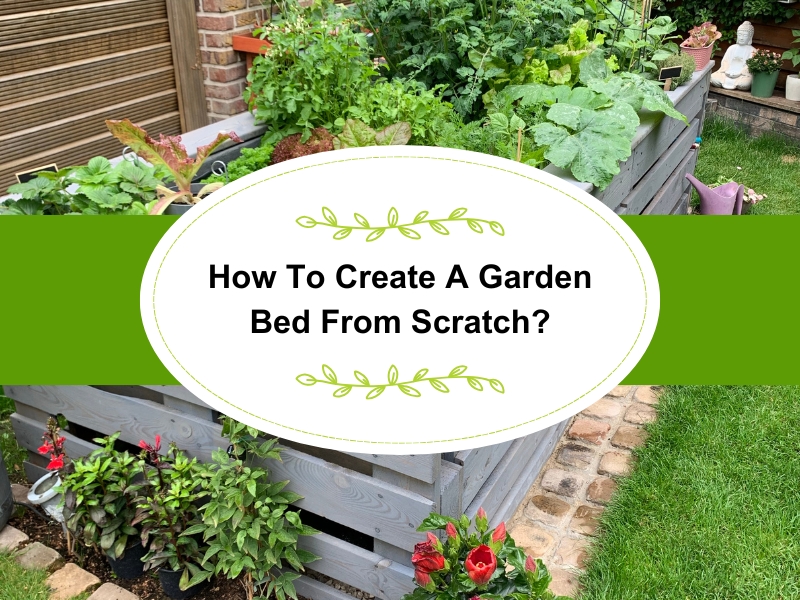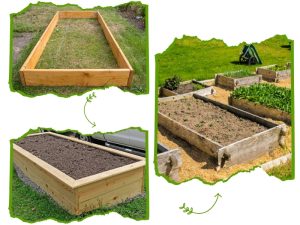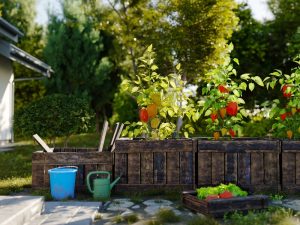Ever dreamt of transforming a patch of your backyard into a flourishing haven? Creating a garden bed from scratch can be incredibly rewarding, bringing a pop of colour, life, and fresh produce (if you choose veggies!) to your Sydney abode. But where do you even begin? Don’t worry; this guide will take you through everything you need to know to create a garden bed from scratch.
How do you plan the perfect garden bed layout?
Before wielding your shovel, consider the following:
- Sunshine: How much sun does the area receive? Sydney’s sunny climate is fantastic, but full-sun plants won’t thrive in constant shade, and vice versa.
- Size and shape: Consider your available space and how you’ll use the garden bed. Will it be a veggie patch, a flower oasis, or a mix? Integrating permaculture design for sustainable living into your garden bed layout can create an autonomous system supporting plant health and the local ecosystem.
- Accessibility: Ensure easy access for planting, weeding, and harvesting (if applicable).
Top tip: Sketch your dream garden bed layout to visualise your green masterpiece!
Which plants should you choose for Sydney’s climate?
Sydney’s Mediterranean climate means hot summers and mild, wet winters. Hence, selecting plants suited to these conditions is essential for a low-maintenance garden.
- Opt for native plants: They naturally adapt to the local climate, meaning they’ll thrive with less water and maintenance. Consider Grevilleas, Kangaroo Paw, or Banksias, which are hardy and drought-resistant.
- Seasonal colour: To keep the garden fresh each season, choose plants that provide year-round colour, such as flowering natives or ornamental grasses.
- Drought-tolerant options: Sydney summers can be hot and dry, so look for plants like Lavender, Rosemary, and Agapanthus that can handle dry spells.
- Consider the soil type: Clay soil is ordinary in Sydney’s west, while sandy soil is more prevalent closer to the coast. Choose plants that suit your soil type, or consider soil amendments if needed.
- Mix plant types: Combining ground covers, shrubs, and taller plants can add depth and interest to the garden bed, creating a more dynamic look.
What soil preparations are essential to creating a garden bed?
A garden bed is only as good as the soil it sits on. Properly preparing the soil will ensure the success of your plants.
- Clear the area: Remove any weeds, grass, or debris from where you plan to place the garden bed.
- Test the soil: Knowing your soil’s pH level and composition can guide any amendments. Sydney’s clay soil often needs organic matter to improve drainage, while sandy soil may need nutrients and water-retentive materials.
- Add organic matter: Work in organic compost or well-rotted manure to enrich the soil. This provides essential nutrients and improves the structure, helping the soil retain moisture.
- Consider drainage solutions: Adding gypsum can improve drainage if you’re working with clay soil. Raised garden beds can also be an option for particularly waterlogged areas.
- Fertiliser choices: Choose a slow-release fertiliser suited to your plants. Native plants, for instance, don’t require a high-phosphorus fertiliser and prefer specially formulated native fertilisers.
What steps are involved in building the structure of your garden bed?
Building a garden bed structure helps define the area and contains the soil, keeping everything neat and organised.
- Define the borders: Use bricks, stones, or timber to create a border around your garden bed. This adds structure and prevents soil erosion.
- Create a raised bed (optional): Consider building a raised garden bed for better drainage. This is especially helpful in areas with poor soil or heavy clay.
- Edge the garden bed: Edging materials like metal or plastic can help keep grass from creeping into the bed. A well-defined edge adds a polished look to the garden.
- Prepare the foundation: If using a raised bed, lay down a layer of gravel or sand at the bottom before adding soil to improve drainage.
- Layering the soil: Fill the garden bed with nutrient-rich soil, leaving a few centimetres below the top edge to allow room for mulching.
What mulching options help keep your garden moist and weed-free?
Mulching is essential in Sydney’s climate, as it helps retain soil moisture and suppresses weeds.
- Organic mulch: Bark, straw, and sugar cane mulch break down over time, adding nutrients to the soil. These mulches are ideal for garden beds with a mix of plants.
- Pebble or gravel mulch: Consider using small pebbles or gravel for a more decorative touch. These are perfect for areas with succulents or native plants that prefer drier soil.
- Layer the mulch correctly: Apply a 5-7 cm thick layer. Too thin will not suppress weeds, and too dense will suffocate plants.
- Mulch around the plants: Avoid piling mulch directly against the stems, which can cause rot. Leave a small gap around each plant for proper airflow.
- Consider seasonal mulching: Reapply mulch in spring and autumn to maintain effectiveness and ensure your plants stay healthy.
How should you plant and arrange your garden bed for the best results?
Careful planting and arrangement help plants thrive and create a balanced, appealing garden bed.
- Place taller plants at the back: For visibility and sunlight access, position taller plants at the back of the bed and shorter ones toward the front.
- Space plants appropriately: Give plants enough room to grow, as overcrowding can lead to poor air circulation and an increased disease risk.
- Mix in companion plants: Some grow better together, benefiting from shared nutrients and pest resistance. For example, pairing herbs like basil with tomatoes can enhance growth.
- Stagger planting times: If using annuals, stagger planting times to ensure that something blooms in your garden bed.
- Anchor points: Use focal points, like a feature plant or ornamental item, to add visual interest and draw the eye.
What are the best seasonal maintenance tips for your garden bed?
Seasonal maintenance keeps your garden bed healthy and looking its best.
- Spring: Prune dead branches, add fresh mulch, and fertilise plants to prepare for active growth.
- Summer: Water deeply and frequently, especially during dry spells. Remove any weeds before they spread.
- Autumn: Plant new perennials, add compost, and prepare for cooler months by removing dead annuals.
- Winter: Prune deciduous plants and cover any frost-sensitive plants with garden fabric if needed.
- Pest control: Look for pests and treat them as needed, using environmentally friendly solutions where possible.
When should you consider professional help for garden bed installation?
Garden bed landscaping is a fantastic way to add structure, colour, and functionality to your outdoor space, creating a welcoming and vibrant environment right in your backyard.
However, building one can take time and present some challenges. If you’re short on time or need expert advice, A1 Gardening & Landscaping Sydney Sydney can help. With their knowledge of Sydney’s unique climate, they’ll assist with everything from soil preparation and plant selection to setting up efficient watering systems. Contact A1 Gardening & Landscaping Sydney Sydney to turn your gardening dreams into reality.



